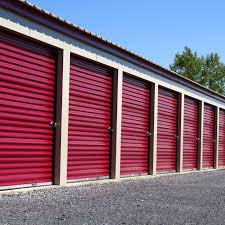What to Know About Climate-Controlled Storage
Investments in climate-controlled 迷你倉 facilities can protect delicate assets brilliant storage. These specialized storage solutions safeguard assets from harsh temperatures, humidity, and other environmental factors. Making an informed choice requires understanding climate-controlled storage’s pros and downsides.

Storage unit climate control requires maintaining a specific temperature and humidity range. To prevent heat, cold, and moisture damage, this range is commonly 55°F to 85°F. Electronics can be damaged by excessive cold or heat, and wooden furniture and artwork, which can deteriorate from dampness, benefit from such conditions.
In addition, pianos and guitars need controlled settings due to their humidity and temperature sensitivity. Climate-controlled units prevent wood warping and metal rusting, keeping these things playable. These settings prevent brittleness and mold growth in vital documents and photos.
Wine needs particular humidity and temperature to age without turning to vinegar; therefore, climate control is essential. Climate management is also necessary for clothing, especially wool and silk, which are prone to pests and mildew in moist environments.
Choosing a climate-controlled storage facility involves various criteria. Assess the facility’s temperature control system reliability. Requesting their system failure backup plans is vital for preventing harm during unexpected breakdowns. Climate control can also be affected by facility cleanliness and upkeep. A well-sealed and maintained unit keeps dust, vermin, and moisture out, safeguarding stored valuables.
Security matters, too. Climate-controlled storage facilities commonly use secure entry, monitored surveillance, and individual alarms. These qualities are crucial for storing irreplaceable, monetarily valuable things.
A climate-controlled storage facility may cost more to rent. Energy and technology needed to sustain conditions are to blame. The increased cost is justified by peace of mind and potential savings from avoiding precious item damage.
Checking climate-controlled items is also essential. Regular inspections can detect concerns like a malfunctioning climate control system or a unit breach, even though these units protect things. These checks can detect damage and deterioration and take preventative measures.
